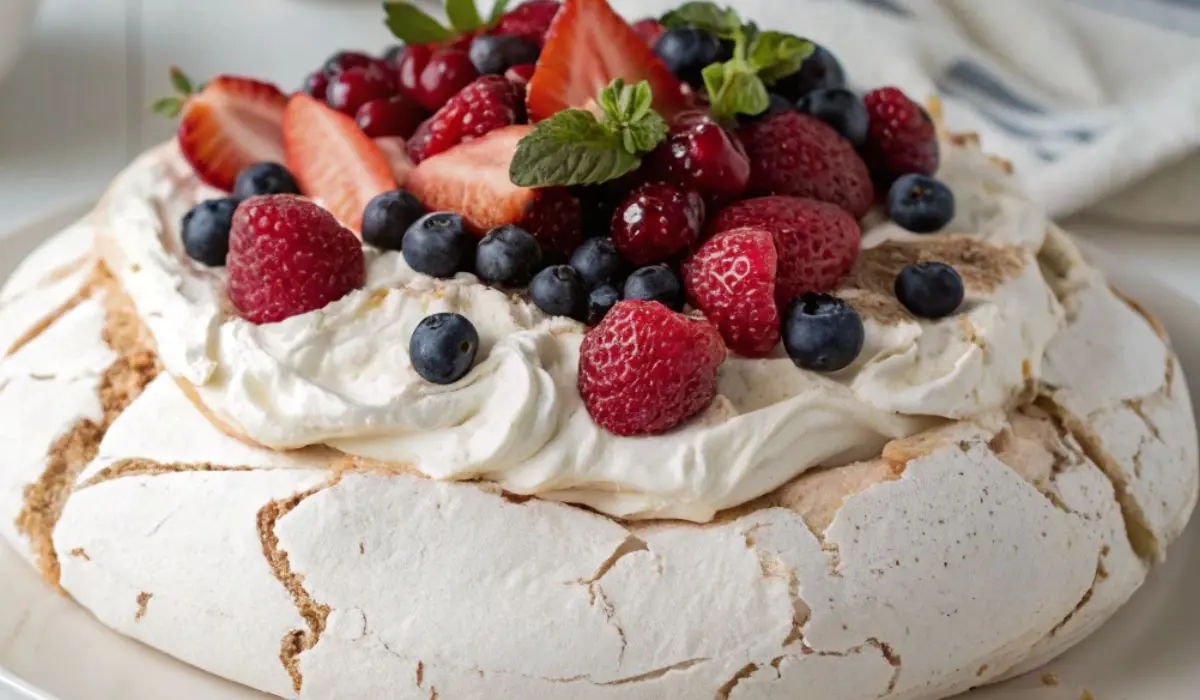Ingredients
Equipment
Method
- Separate egg whites while eggs are cold, then measure exactly 150ml. Let whites come to room temperature for 30 minutes. Preheat oven to 340°F (170°C).
- Using a stand mixer, beat egg whites on medium-high speed until soft peaks form. This takes about 3-4 minutes.
- Add superfine sugar one tablespoon at a time while beating continuously. After all sugar is added, beat for 3 more minutes until thick and glossy. Test by rubbing mixture between fingers - no sugar grit should remain.
- Gently fold in cornstarch and vinegar using a spatula for just 5-7 seconds until barely combined.
- Turn a 9-inch springform pan base upside down and place parchment paper on top, securing with small dabs of meringue at edges.
- Spoon half the meringue onto paper, creating an 8-inch circle. Add remaining meringue and shape into a dome with gently sloping edges, keeping height to 2 inches maximum.
- Place in oven and immediately reduce temperature to 240°F (115°C). Bake for 1½ hours without opening the oven door.
- Turn off oven and leave pavlova inside with door closed to cool completely overnight or for at least 8 hours.
- For topping: Beat heavy cream, sugar, and vanilla until soft peaks form. Don't overbeat.
- Carefully transfer pavlova to serving platter. Top with whipped cream and arrange fresh fruit gently by hand just before serving.
Notes
Success Tips: Use fresh store-bought eggs, not old ones from your fridge. Ensure all equipment is completely clean and grease-free. Don't attempt on very humid days unless following weather modifications.
Storage: Store untopped pavlova in airtight container at room temperature for up to 24 hours. Never refrigerate the bare meringue.
Troubleshooting: If pavlova cracks, use whipped cream as 'glue' to piece it together. Even cracked pavlova tastes amazing once topped with cream and fruit.
